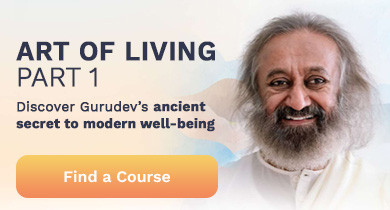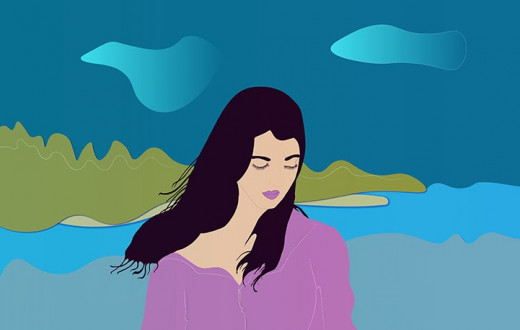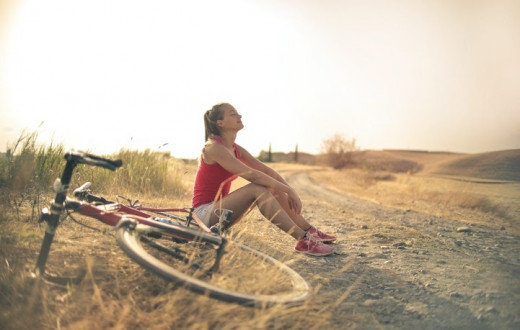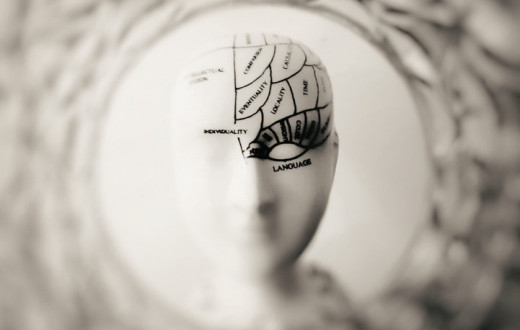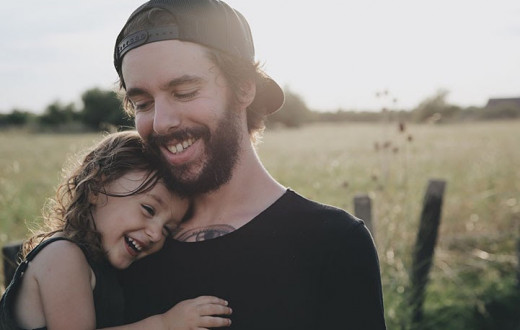By Denise Everheart
The secret to better mental health is through using your breath as a tool to manage your emotions. Pranayama exercises are the key to being happier!
I think we can all agree that mental health is one of the great pillars of a happy life. But mental health isn’t something we can leave to chance. We are all subject to stress day in and day out, which will eventually take a toll on us, much like a ticking time bomb if left unchecked. So let’s disarm this stress bomb with the power of our very own breath, in the form of pranayama exercises, and live a happier life!
Understanding pranayama exercises
Pranayama is pronounced praa-nuh-yaa-muh and is the regulation of breath through techniques and exercises. In Sanskrit Prana means life energy and Yama is to control or to house. Another interpretation uses the second half of the word as, Ayama, which means expansion or extension. These two definitions might seem somewhat contradictory but speaks more to the delicate balance between effort and effortlessness so that you do not strain while practicing pranayama breathing exercises.
Prana exists in the air that we breathe, especially in fresh air and to some degree in the fresh foods we eat. It is what sustains us and makes our life possible. It also contributes to our overall mental health. Using the power of breath, we can harness that life energy and positively affect our emotions.
Imagine working in an office building with no fresh air access 5 days a week 50 weeks a year. When we do not have the ability to replenish our life energy due to the lack of fresh air, we become dull, lethargic, depressed, and so on… But what happens when we take a walk in the park, a stroll on the beach, or a hike in the woods? We intuitively and naturally breathe deeper unknowingly harvesting prana! And we feel lighter and happier in just mere minutes. The more prana we have, the better we feel!
Another way prana is reduced is when we consume dead foods and not enough fresh foods. Being in stressful and negative situations or mindsets can also reduce our prana levels. Our mental health, as well as our physical health, is directly connected to our prana levels.
Pranayama exercises help you tap into the prana that is already present, even in an office cubicle! Let’s look at the why, how, when, where, and what to expect with 7 pranayama breathing exercises.
Straw breath
Why do straw breath? Straw breath is easy to learn and practice. It can lower blood pressure temporarily- though it is not a substitute for medication.
How to do straw breath- Breathe deeply in through the nose and slowly exhale through the mouth as if there is an invisible straw in your mouth.
When to do straw breath- Any time you feel anxious you can do straw breath- even with your eyes open!
Where to do straw breath- In the car, at work, while you do a walking meditation, basically anywhere!
What to expect when you practice straw breath- This breathing exercise will help you to calm down quickly in the moment.
Belly breathing (diaphragmatic breathing, dai-uh-fruh-ma-tuhk)
Why do belly breathing? Belly breathing slows down the heartbeat and can stabilize blood pressure.
How to do belly breathing-
1. Lie on your back on a flat surface (or in bed) with your knees bent.
2. Place one hand on your upper chest and the other on your belly, just below your rib cage.
3. Breathe in slowly through your nose, letting the air in deeply, towards your lower belly.
4. The hand on your chest should remain still, while the one on your belly should rise.
5. Tighten your abdominal muscles and let them fall inward as you exhale through pursed lips.
6. The hand on your belly should move down to its original position.
7. Practice for five to 10 minutes, several times a day if possible.
When to do belly breathing- Always on an empty stomach, right before bed is the best time but other times are ok too.
Where to do belly breathing- In bed or on the floor, even sitting in a chair will work as long as the back is kept straight.
What to expect when you practice belly breathing- You will strengthen the diaphragm and help the lungs work more efficiently over time and experience an increase in well-being.
Bee breath (Bhramari, Brah-mah-Ree)
Why do Bee breath? Instant calm! Frustration and anxiety melt away. It can even prevent anger!
How to do Bee breath- With eyes closed, spine straight, gently place your fingers on the cartilage flap where your cheek and ear meet. Take a deep breath in and exhale making a humming sound, like a bee, while gently pressing the cartilage in and out with your fingers. The higher the pitch of your humming sound, the better the results. Inhale and continue 5-9 times.
When to do Bee breath- This breathing technique should be done on an empty stomach, as needed- up to 9 times a day!
Where to do Bee breath- Anywhere!
What to expect when you practice Bee breath- A calmer you!
Skull shining breath (Kapalbhati, Kah-pah-luh-BAH-tee)
Why do skull shining breath? This deep breathing technique purifies, rejuvenates, and refreshes the body and mind. It also tones and cleanses the respiratory system of toxins.
How to do skull shining breath- Sit with a straight spine, take a deep breath in, and as you exhale contract your lower belly, forcing the breath out in a short burst. Quickly release the abdomen and breathe in deeply. You can repeat this sequence 20 times, rest 30 seconds, do another 20, rest again and do one more sequence of 20.
When to do skull shining breath- On an empty stomach, ideally first thing in the morning.
Where to do skull shining breath- In a private quiet meditation space.
What to expect when you practice skull shining breath- This pranayama breathing technique clears the respiratory system of allergens, increases metabolism, tones abdominals, and improves circulation. You may also experience less bothersome thoughts.
Special notes- Kapalbhati is an advanced technique and should not be practiced by those who have high blood pressure, have heart or lung conditions, have a pacemaker, or by women who are pregnant, menstruating, or recently given birth. Please seek the advice of a professional yoga instructor for any guidance needed.
Victory breath (Ujjayi, Ooh-Jai)
Why do victory breath? Ujjayi raises the level of your yoga practice when you include it during your asana routine. It can also help ease you into sleep when you do just 10 long Ujjayi breaths in bed.
How to do victory breath- You can learn Ujjayi breath either in this YouTube video, or when you attend a SKY Breath Meditation course.
When to do victory breath- Anytime.
Where to do victory breath- Anywhere.
What to expect when you practice victory breath- You will become more focused and centered on demand.
Alternate nostril breathing (Nadi Shodhan, Nah-dee Sho-dun)
Why do alternate nostril breathing (ANB)? ANB can help reduce stress and fatigue as well as balance the left and right sides of the brain.
How to do ANB- Here is an easy-to-follow video so you can learn Nadi Shodhan more easily.
When to do ANB- It is especially good to do before meditation. It is also good to do before any high-stress situations.
Where- Anywhere.
What to expect when you practice ANB- More mindfulness will become a natural, effortless happening.
Bellows breath (Bhastrika, Bha-STRI-kaah)
Why do bellows breath? It is an awesome tool for clearing unwanted thoughts and energizing your mind and body.
How to do bellows breath- This pranayama exercise needs to be taught by a yoga or meditation instructor. You can learn for free by attending Beyond Breath, see below for details.
When to do bellows breath- On an empty stomach, earlier in the day, or when you need a boost. It is also great right before meditating.
Where to do bellows breath- This is more about where not to do bellows breath. Not in a car and not on an airplane.
What to expect when you practice bellows breath- This pranayama technique oxygenates the blood, increases lung capacity, and increases your awareness.
What’s even more powerful than pranayama exercises?
If you want to go above and beyond what pranayama exercises can give you, you want to learn SKY Breath Meditation, the ultimate mental health tool! SKY uses the power of your breath for meditation and gives numerous mental health benefits including, but not limited to:
Enhanced optimism
Significant decrease in depression
Increased self-esteem
Greater mental focus
Significant decrease in anxiety
Improved relationships
Increased joy
Increased life satisfaction
Reduced addictive behaviors
SKY Breath Meditation also gives many physical health benefits, like increased immunity, decreased cholesterol, improved respiratory function, healthier blood pressure, and more! In fact, in 40 years, 30 million people have benefitted from SKY Breath Meditation! So after all the why, how, when, where, and what questions, the only question left is- Who’s in?!?
Who’s in to attend a FREE introductory breath and meditation session, Beyond Breath? You will experience a relaxing guided meditation and learn Bellows Breath! You will also learn more about SKY, and have the chance to ask any questions you might have. If 30 million people have benefitted from SKY, you can too!
Now you can breathe your way to better mental health!
Denise Everheart is a freelance writer, life-long meditator, SKY Breath Meditation instructor, party planner, veg chef, and recipe designer. Follow her @everheartstudio4meditation and @celeplateyourlife on Instagram.
Disclaimer: This content on the Art of Living Blog is not intended to be a substitute for professional medical advice, diagnosis, or treatment. Always seek the advice of your physician or other qualified health providers with any questions you may have regarding a medical condition, Any links to third-party websites are provided as a convenience only and the Art of Living Blog is not responsible for their content.
